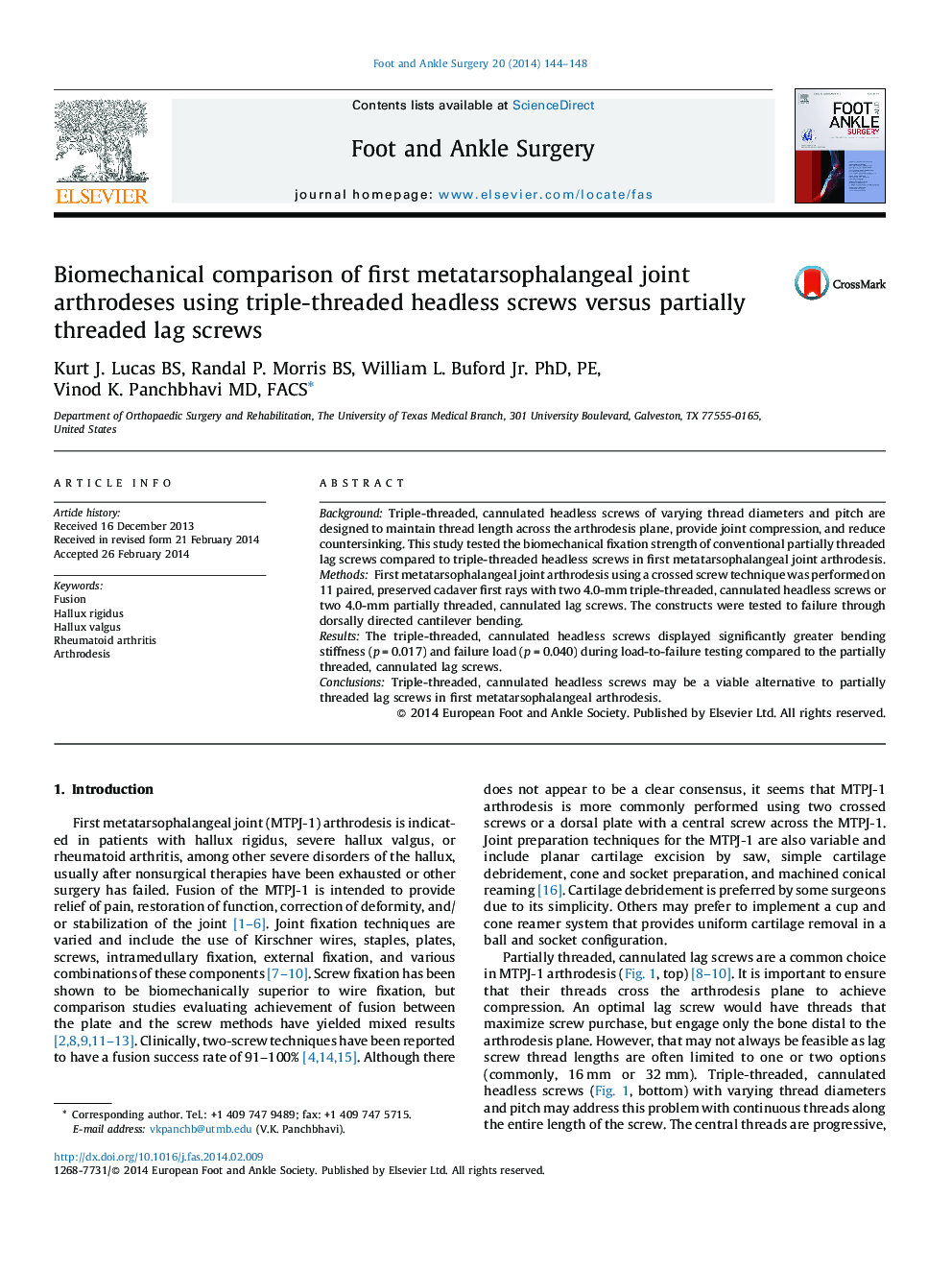| Article ID | Journal | Published Year | Pages | File Type |
|---|---|---|---|---|
| 4054721 | Foot and Ankle Surgery | 2014 | 5 Pages |
BackgroundTriple-threaded, cannulated headless screws of varying thread diameters and pitch are designed to maintain thread length across the arthrodesis plane, provide joint compression, and reduce countersinking. This study tested the biomechanical fixation strength of conventional partially threaded lag screws compared to triple-threaded headless screws in first metatarsophalangeal joint arthrodesis.MethodsFirst metatarsophalangeal joint arthrodesis using a crossed screw technique was performed on 11 paired, preserved cadaver first rays with two 4.0-mm triple-threaded, cannulated headless screws or two 4.0-mm partially threaded, cannulated lag screws. The constructs were tested to failure through dorsally directed cantilever bending.ResultsThe triple-threaded, cannulated headless screws displayed significantly greater bending stiffness (p = 0.017) and failure load (p = 0.040) during load-to-failure testing compared to the partially threaded, cannulated lag screws.ConclusionsTriple-threaded, cannulated headless screws may be a viable alternative to partially threaded lag screws in first metatarsophalangeal arthrodesis.
